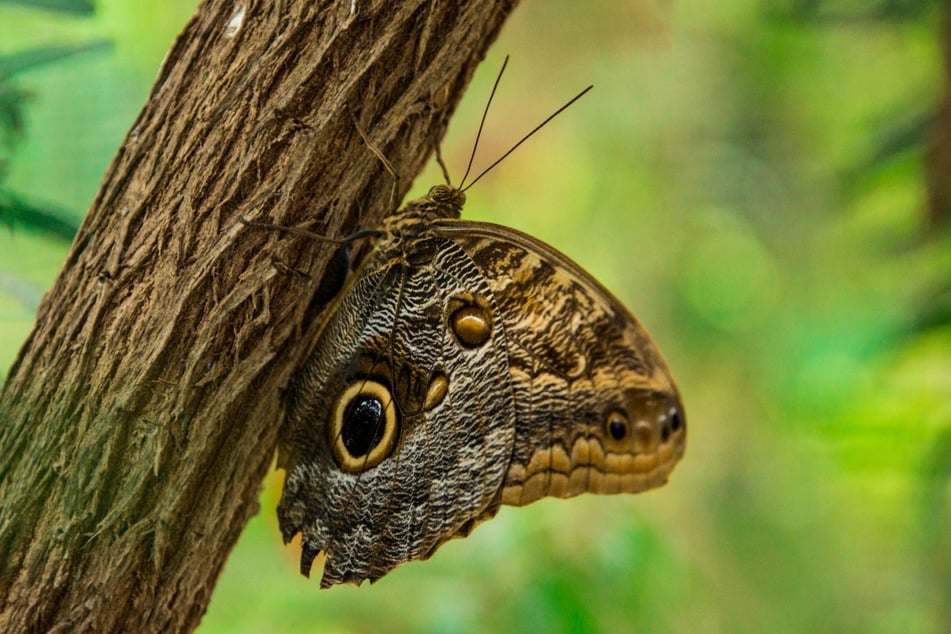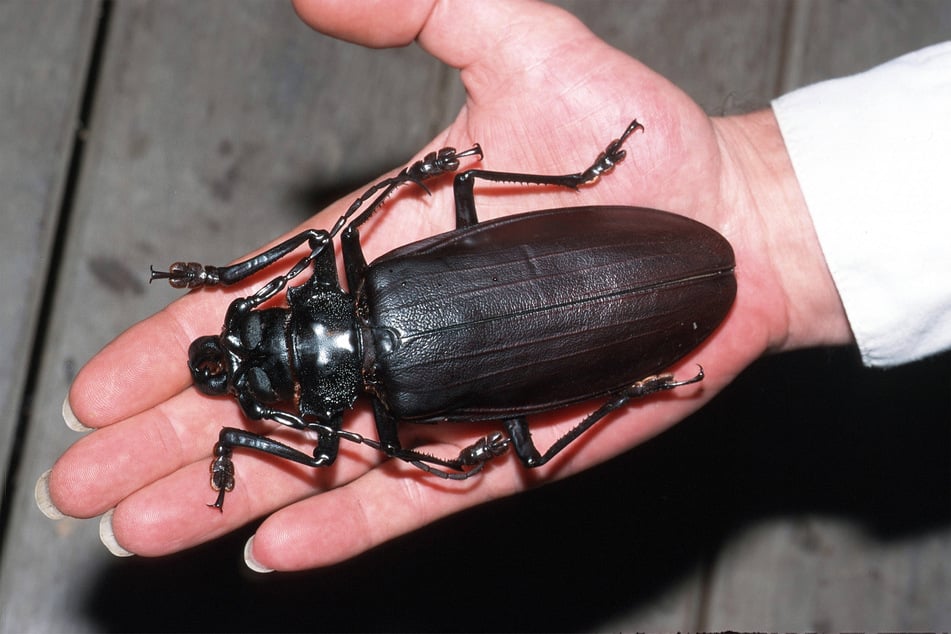What is the largest flying insect in the world?
While you usually think of small bugs and pesky flies when you hear the words "flying insect," they're not all so tiny. What is the largest flying insect in the world, how big is it, and what insects give it a run for its money?

There are some pretty massive flying insects in the world, and there are even more that are so small, you'd hardly notice that they exist. Today we're gonna take a look at the former, checking out some of the world's biggest flying insects, admiring their wings, and wondering what makes them so enormous.
So, what flying insect takes home the animal world record for largest in the world? TAG24 takes a look at the top five biggest flying bugs out there and why they have become so huge.
What is the largest flying insect?
Known widely as the white witch moth, the thysania agrippina is the biggest flying insect in the world on account of its truly enormous wings. These insane animals are often referred to by alternative names such as the ghost moth or the great owlet moth, and have become incredibly famous for being one of the biggest insects in the entire world.
Native to Mexico and Uruguay, and sometimes making appearances in other Central American countries as well as Texas in the USA and even Brazil in South America, the white witch moth draws its name due to both its color and its ability to "magically" blend in with other objects. They were first recorded and observed in the 18th century.
There is a big debate whether the white witch moth is the biggest flying insect in the world. In terms of wingspan, it is by far the largest. But in terms of wing surface area, this bad-boy has a few competitors.

How big is the largest flying insect?
White witch moths often feature a wingspan around twelve inches tip-to-tip. In some cases, these gargantuan moths have managed to reach even bigger than twelve inches. The Atlas moth and Hercules moth, however, have fought for the position of biggest flying insect due to the fact that they both feature larger wing areas than the white witch moth.
With a wing surface area of around 25 square inches, the Atlas moth is a particularly huge specimen. What's important to note, though, is that in terms of wingspan, the Atlas moth only averages at around 9.4, more than 2 inches less than the white which moth. The Hercules moth fairs a little better in wingspan, but still doesn't come all that close.
Considering this significant difference in size, we feel that it is pretty clear that the white witch moth can safely hold the position of largest flying insect in the world.
Why is the biggest flying insect so big?
Not a huge amount is known about the white witch moth, making it more-or-less impossible to properly explain why it is so big. There are, however, a few widely accepted reasons that likely explain this extraordinary phenomenon. Ultimately, though, it likely comes down to environment and evolution.
In general, the white witch moth has been found in the giant rainforests, temperate forests, grasslands, and rural areas that make up most of the Central American countries it calls home. The caterpillars that eventually grow into the white witch moth are generally found on the India-rubber tree, which is where the female moths likely lay their eggs.
All of this potentially explains why these moths are so huge. The white witch moth has evolved in a nutrient rich environment, full of giant trees and a variety of other insects that have fought for their position in the ecosystem.
A giant moth that is capable of blending into the bark of nearby trees and is, in itself, formidable, is surely more likely to survive in such an environment.
Top 5 largest flying bugs

There are some absolutely wild insects out there, with their size becoming ever-the-more impressive when you realize that they can also fly. While the world's largest insect is objectively bigger than all of these bad-boys, it can't fly, and simply spends its time crawling around on the bark of trees and in various bushes.
Let's clear something up very quickly: This is not the definitive "top five" when it comes to the largest flying bugs (for starters, the white witch moth isn't listed here). Instead, this is a selection of some of the most impressive insects to have ever walked (or, rather, flown) the Earth.
Here are five of the biggest flying insects in the world
- Titan beetle: 6–7 inches in length, 4–5 oz in weight
- Tropidacris grasshopper: Wingspan of 6–7 inches
- Tarantula hawk: Wingspan of 3–4 inches, massive body and stinger
- Atlas moth: Wingspan of 9–10 inches
- Hercules moth: Wingspan of 10–11 inches
These enormous flying insects likely bring fear to the heart of anyone who is even slightly scared of bugs. Don't worry, though, they're mostly harmless!
Why are most insects so small?
The answer to this question is potentially even more interesting than the largest insect in the world, and it all comes down to one simple thing: Insects don't breathe using lungs, but via small tubes that wouldn't work if they were bigger. These tiny little tubes are called tracheae and are distributed across the body, absorbing oxygen via a process called diffusion.
Due to the way that the oxygen is collected and applied, areas of a bug's body that use more energy (legs, wings, etc.) have a higher concentration of tracheae. This is an extremely inefficient system and wouldn't work over a larger surface area. As such, the body of an insect can never really be particularly big.
The world's biggest flying insect becomes even more impress when you consider why insects are generally so tiny. The white witch moth must have some incredible tracheae to control those massive wings!
Cover photo: 123RF/Unkreatives




